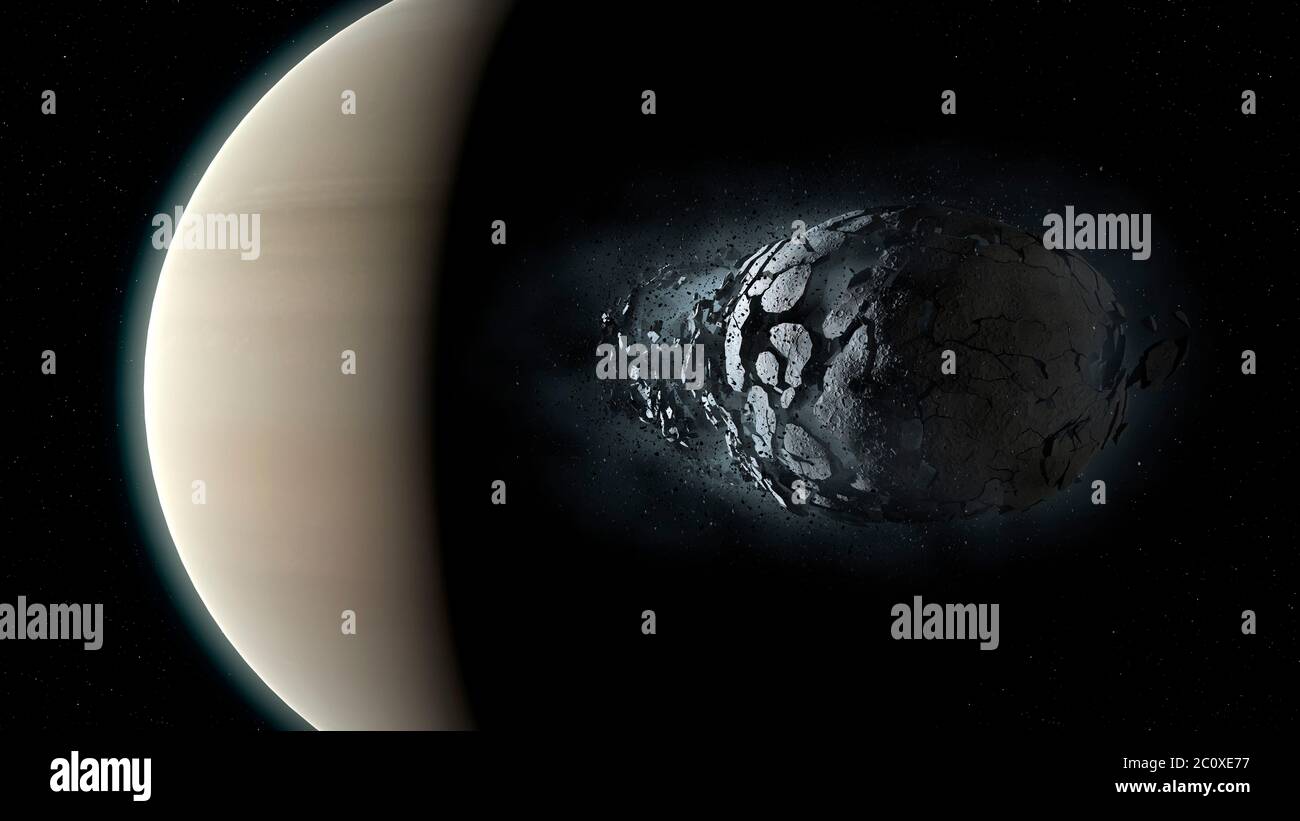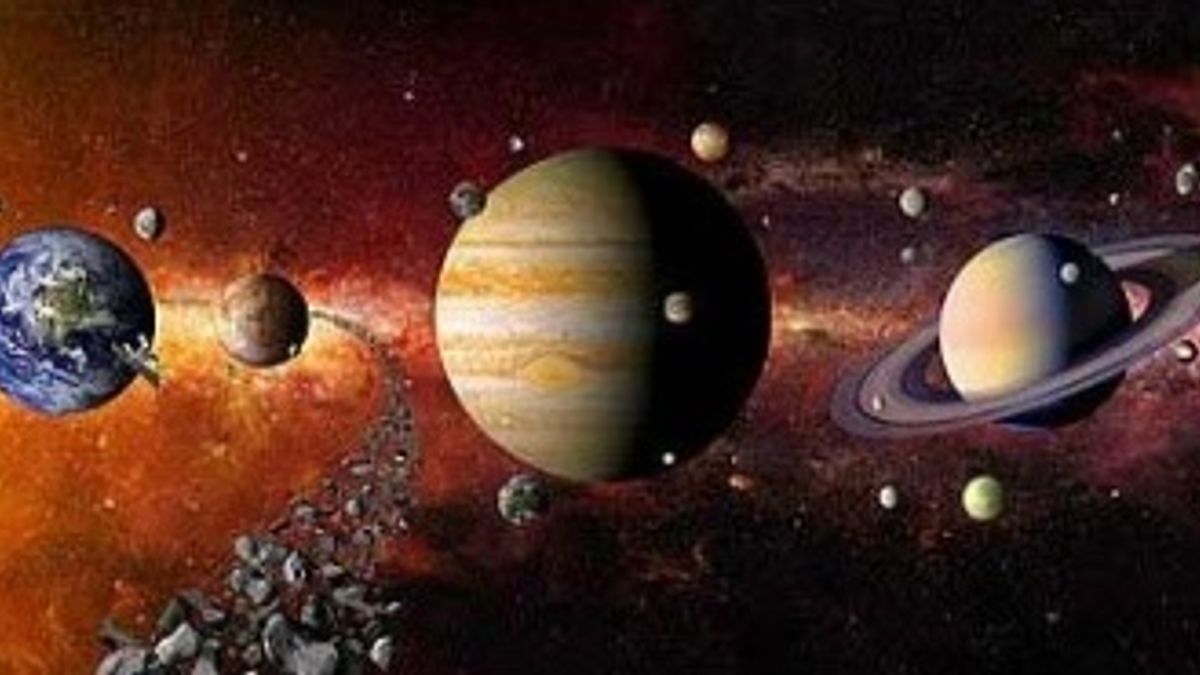The solar system is held together by the force of gravity. Gravity is the force that attracts objects to each other. It is the force that makes it possible for us to stand on the ground.
Gravity is also the force that keeps the planets in orbit around the sun. All of the planets in the solar system are held in orbit by the force of gravity.
The Solar System is held together by the force of gravity. Gravity is the force that attracts objects to each other. It is what keeps the planets in orbit around the Sun.
The Sun is the most massive object in the Solar System. It has the most gravity. The planets orbit the Sun because they are pulled towards it by its gravity.
The force of gravity is also what keeps the Moon in orbit around Earth. Earth has more gravity than the Moon. The Moon orbits Earth because Earth’s gravity pulls it towards us.
Gravity is a very weak force. It is only because the Sun and Earth are so massive that their gravity can hold onto the planets and moons.
The force of gravity is what keeps the Solar System together.
It is what keeps the planets orbiting the Sun and the moons orbiting the planets.
Which force is responsible for holding the solar system together ?
What Force Holds the Solar System Together
The solar system is held together by the force of gravity. Gravity is the force that attracts two objects towards each other. The more massive an object is, the more gravity it has.
The force of gravity is what keeps the planets in orbit around the sun. It is also what keeps the moon in orbit around Earth.
The solar system is held together by the force of gravity.
Gravity is the force that attracts two objects towards each other. The more massive an object is, the more gravity it has. The force of gravity is what keeps the planets in orbit around the sun.
It is also what keeps the moon in orbit around Earth.
The planets in our solar system orbit the sun because of the sun’s gravity. The sun’s gravity is so strong that it keeps the planets in orbit around it.
The force of gravity is also what keeps the moon in orbit around Earth.
Gravity is a force that exists between any two masses. It’s what keeps us glued to the ground and what keeps the planets in orbit around the sun.
The force of gravity is proportional to the mass of the object. So, the more mass an object has, the more gravity it has.
The force of gravity is what gives the solar system its structure.
It’s what keeps the planets in orbit around the sun and what keeps the moon in orbit around Earth. Without gravity, the solar system would be a chaotic mess.
Every Object in the Solar System is Pulled Towards Every Other Object by the Force of Gravity
Every object in the solar system is pulled towards every other object by the force of gravity. This force is what keeps planets in orbit around the sun and moons in orbit around planets. Gravity is also what makes it possible for us to stand on the Earth and what makes objects fall to the ground.
The force of gravity is caused by the mass of an object. The more mass an object has, the more gravity it has. The force of gravity also gets weaker the further away you are from an object.
So, the Earth has more gravity than the moon, but the sun has more gravity than the Earth.
Gravity is a very important force in the solar system. Without it, the planets would fly off into space and we would all float off the Earth!
The Bigger an Object Is, the More Gravity It Has
Gravity is the force by which a planet or other body draws objects toward its center. The force of gravity keeps all of the planets in orbit around the sun. Earth’s gravity is what keeps you on the ground and what makes things fall.
Gravity is also what makes it possible for you to jump. When you jump, you are pushing against the force of gravity. The force of gravity is also what makes it possible for you to throw a ball up in the air and catch it again.
The bigger an object is, the more gravity it has. The more mass an object has, the more gravity it has. Gravity is directly proportional to mass.
So, if you double the mass of an object, you will also double its gravity.
If you could somehow gather all of the mass in the universe into one place, the resulting object would have so much gravity that not even light could escape from it. This is what scientists think a black hole is.

Credit: www.alamy.com
What Role Does Distance Play in the Gravitational Forces That Hold the Solar System Together
The Solar System is held together by the gravitational force between the sun and the planets. The planets orbit the sun because they are attracted to it by gravity. The sun’s gravity also keeps the planets from flying off into space.
The gravity between the sun and the planets is strong enough to keep the planets in orbit, but it is not strong enough to keep them from moving away from the sun. The planets move away from the sun because they are constantly being pushed away by the sun’s gravity.
The planets are also constantly being pulled towards the sun by the sun’s gravity.
This is what keeps the planets in orbit. The planets would fly off into space if it wasn’t for the sun’s gravity.
The gravity between the sun and the planets is strong enough to keep the planets in orbit, but it is not strong enough to keep them from moving away from the sun.
The planets move away from the sun because they are constantly being pushed away by the sun’s gravity.
The planets are also constantly being pulled towards the sun by the sun’s gravity. This is what keeps the planets in orbit.
The planets would fly off into space if it wasn’t for the sun’s gravity.
The gravity between the sun and the planets is strong enough to keep the planets in orbit, but it is not strong enough to keep them from moving away from the sun. The planets move away from the sun because they are constantly being pushed away by the sun’s gravity.
The planets are also constantly being pulled towards the sun by the sun’s gravity. This is what keeps the planets in orbit. The planets would fly off into space if it wasn’t for the sun’s gravity.
What Force Holds the Galaxy Together
The force that holds the galaxy together is called gravity. Gravity is the force of attraction between objects. It is what keeps the planets in orbit around the sun and what keeps the moon in orbit around the Earth.
Gravity is a very weak force. It is much weaker than the other forces that we are familiar with, such as the force of electricity or the force of magnetism. However, it is the only force that acts over long distances.
This is why it is the force that we are most familiar with.
The force of gravity is caused by the mass of objects. The more mass an object has, the more gravity it has.
The Earth has more mass than the moon, so it has more gravity. This is why the Earth can pull the moon towards it.
The force of gravity is also what keeps the galaxies together.
Galaxies are huge collections of stars, dust, and gas. They can be billions of light years across. The gravity of all the stars and other matter in a galaxy pulls everything together.
without gravity, the universe would be a very different place. Stars, planets, and galaxies would not exist. We would not exist either.
Thankfully, gravity is a force that we can rely on. It is the force that holds the universe together.
Explain Why is Pluto No Longer a Planet?
On August 24, 2006, the International Astronomical Union (IAU) downgraded the status of Pluto to that of a “dwarf planet.” This means that from now on, there are only eight planets in the solar system. So, why did Pluto get demoted?
It all has to do with the definition of a planet. The IAU defines a planet as a celestial body that (1) is in orbit around the Sun, (2) has sufficient mass for its gravity to pull it into a nearly round shape, and (3) has “cleared the neighborhood” around its orbit.
Pluto meets the first two criteria, but fails on the third.
Its orbit crosses the orbit of Neptune, and it shares its orbital neighborhood with a number of other objects, including the Kuiper Belt objects. For this reason, the IAU decided that Pluto is not a “true” planet.
This may be a bit of a disappointment to Pluto fans, but it’s important to remember that Pluto is still a fascinating and unique object in our solar system.
It’s the largest known dwarf planet, and it’s thought to be composed of a rocky core surrounded by a mantle of ice. It also has a very thin atmosphere, and its surface is covered in a layer of frozen methane.
So, even though it’s not a “planet” anymore, Pluto is still well worth studying.
Who knows what we’ll learn about this fascinating world in the years to come?
Conclusion
In short, the force that holds the solar system together is gravity. Every object in the solar system has gravity, which is what pulls everything together. Without gravity, the solar system would fly apart.
Gravity is the force by which a planet or other body draws objects toward its center. The force of gravity keeps all of the planets in orbit around the sun. Earth’s gravity is what keeps you on the ground and what makes things fall.
Gravity is also what keeps the moon in orbit around Earth. And it’s what keeps satellites in orbit around Earth, too.
The force of gravity is always attractive.
It pulls objects together. But it doesn’t pull just any two objects together. The force of gravity depends on the masses of the objects and the distance between them.
